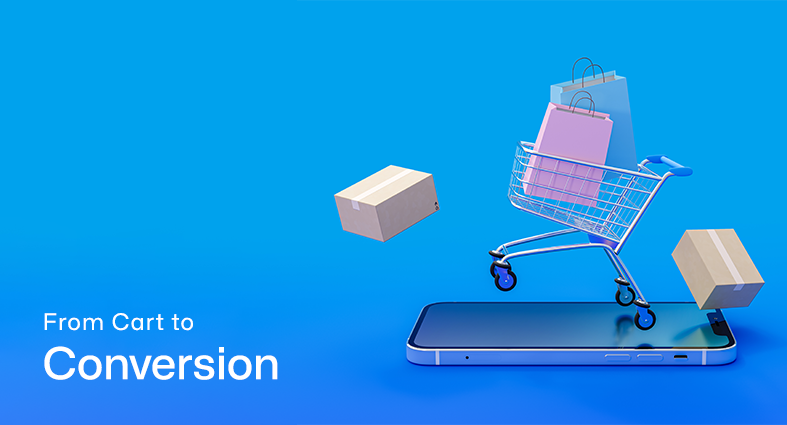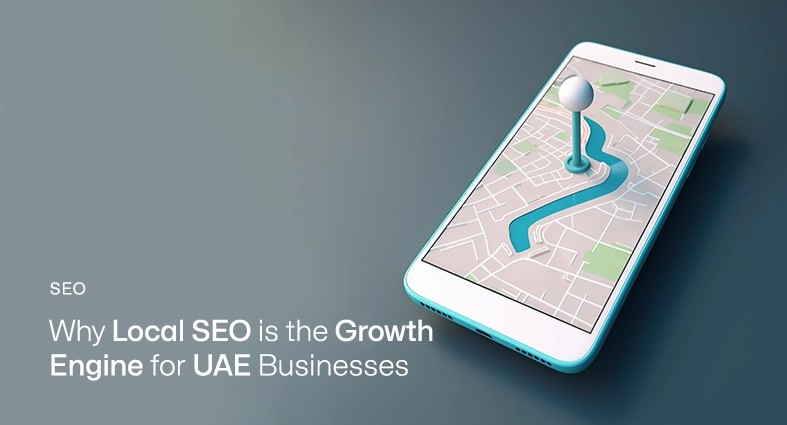As the world becomes increasingly mobile-centric, ecommerce businesses need to adapt and optimize their websites for the mobile-first era. With the majority of online users now accessing the internet through mobile devices, it is crucial to ensure that your ecommerce website is designed to deliver a seamless and user-friendly experience on smartphones and tablets. In this comprehensive guide, we will explore the importance of mobile optimization in ecommerce, the rising trends of mobile shopping, and the strategies you can implement to design your ecommerce website for optimal mobile performance. Get ready to unlock the full potential of your ecommerce business in the mobile-first era.
The Importance of Mobile Optimization in Ecommerce
Mobile optimization is crucial for ecommerce businesses due to the growing dominance of mobile devices in online shopping. According to recent statistics, mobile commerce, or m-commerce, is on the rise, with a significant portion of online transactions now taking place on smartphones and tablets. Customers expect a seamless experience when browsing and purchasing products on their mobile devices, and failure to provide this can lead to frustration and loss of potential sales.
By optimizing your ecommerce website for mobile devices, you can enhance the user experience, increase conversion rates, and ultimately drive more sales. A mobile-friendly website enables customers to easily navigate through your product catalog, view images, read descriptions, and make secure purchases, all from the convenience of their mobile devices. Moreover, mobile optimization can also positively impact your search engine rankings, as search engines prioritize mobile-friendly websites in their mobile search results
Rise of mobile shopping: Statistics and Trends
- Mobile traffic dominance: Mobile devices have surpassed desktops as the primary source of internet traffic. In many regions, mobile devices account for over 50% of total website visits.
- Mobile shopping growth: The number of people using mobile devices for online shopping continues to grow exponentially. Studies show that mobile commerce sales are expected to reach new heights in the coming years.
- Mobile conversion rates: Mobile shoppers have become more comfortable with making purchases on their devices. Conversion rates on mobile-optimized websites have increased significantly, demonstrating the importance of providing a seamless mobile shopping experience.
- Mobile search influence: Mobile devices play a significant role in the customer journey. Customers often use their smartphones to research products, compare prices, read reviews, and make purchase decisions. Optimizing your ecommerce website for mobile search can help capture these potential customers and increase your chances of converting them into buyers.
Understanding Mobile User Behavior
Understanding mobile user behavior is crucial when it comes to mobile optimization for ecommerce websites. Mobile users exhibit unique browsing habits and preferences, which can significantly impact their engagement and conversion rates. Mobile users tend to have shorter attention spans and limited screen space, making it essential to provide concise and visually appealing content. Additionally, mobile users often prefer quick and convenient interactions, such as streamlined navigation and simplified checkout processes. By understanding the specific needs and behaviors of mobile users, ecommerce businesses can tailor their website design and functionality to meet these expectations, resulting in a more satisfying user experience and higher conversion rates.
Mobile browsing habits and preferences
Mobile users have distinct browsing habits and preferences compared to desktop users. They tend to engage in shorter browsing sessions, often using their mobile devices during on-the-go moments or in between tasks. Mobile users also prioritize convenience and efficiency, seeking quick access to information or completing transactions with minimal effort. Understanding these browsing habits and preferences is crucial in designing an optimized mobile experience.
Differences between mobile and desktop user experiences
Mobile and desktop user experiences differ in several key aspects. Mobile screens are smaller, requiring a more focused and concise presentation of content. Additionally, touch-based navigation and gestures replace traditional mouse interactions, necessitating intuitive and easily accessible controls. Mobile users also expect faster load times and seamless interactions, as they may have limited data plans or be subject to connectivity issues. Recognizing and addressing these differences is essential for providing an exceptional mobile user experience.
Mobile-Responsive Design and Its Impact on Conversions
- Improved User Experience: Mobile-responsive design ensures that your ecommerce website adapts to different screen sizes and devices, providing a consistent and enjoyable user experience. By dynamically adjusting the layout, font sizes, and images, the responsive design eliminates the need for users to zoom or scroll horizontally, enhancing their overall experience.
- Faster Load Times: Mobile users are often connected via cellular networks, which may have slower data speeds compared to broadband connections. Slow-loading websites frustrate users and increase the likelihood of them abandoning your site. The mobile-responsive design focuses on optimizing page load times by minimizing file sizes, leveraging browser caching, and utilizing content delivery networks (CDNs). Faster load times not only improve the user experience but also positively impact search engine rankings.
- Multi-Device Compatibility: With the proliferation of smartphones, tablets, and other mobile devices, it’s crucial to ensure your ecommerce website functions seamlessly across various platforms. Mobile-responsive design enables your website to adapt to different devices and screen orientations, eliminating the need for separate mobile versions. This compatibility allows you to reach a broader audience and maintain consistent branding and user experience across devices, ultimately boosting conversions.
- Enhanced SEO Performance: Mobile responsiveness is a critical factor in search engine optimization (SEO). A responsive design ensures your website is easily crawlable and indexable by search engines, leading to improved visibility and organic traffic. Additionally, responsive websites provide a better user experience, reducing bounce rates and increasing time on site, which are essential SEO metrics.
- Increased Conversion Rates: Optimizing your ecommerce website for mobile users directly impacts conversion rates. A user-friendly and visually appealing mobile experience encourages visitors to browse products, add items to their carts, and complete purchases. Streamlined navigation, clear calls-to-action, simplified checkout processes, and mobile-friendly payment options all contribute to a frictionless buying experience, resulting in higher conversion rates and increased revenue.
Mobile UX Design Best Practices
To create a successful mobile user experience (UX) for your ecommerce website, it is essential to follow mobile UX design best practices. These practices focus on delivering a seamless and intuitive browsing experience for mobile users, ensuring they can easily navigate your site, find what they’re looking for, and complete their purchase. First and foremost, prioritize responsive web design, which allows your site to adapt to different screen sizes and orientations. This ensures that your content and layout remain consistent and accessible across all devices. Additionally, streamline your navigation by using clear and concise menus, collapsible sections, and easy-to-reach buttons. Simplify the checkout process by minimizing form fields, offering guest checkout options, and integrating trusted payment gateways for a secure and convenient experience. Optimize your page speed by compressing images, leveraging browser caching, and reducing unnecessary code. It’s also crucial to design your content with mobile users in mind, using legible font sizes, clear headings, and mobile-friendly imagery. Incorporating touch-friendly elements, such as large buttons and swipe gestures, further enhances the mobile experience. Lastly, continuously test and optimize your mobile UX design, leveraging analytics data to identify areas for improvement and to ensure that your website provides an exceptional user experience across all mobile devices. By implementing these mobile UX design best practices, you can enhance customer satisfaction, increase conversions, and drive the success of your ecommerce business in the mobile-first era.
Simplified Navigation and Intuitive User Interface
Mobile users have limited screen space, so it’s crucial to provide a simplified and intuitive navigation system. Complex menus and excessive options can overwhelm users and make it difficult for them to find what they’re looking for. By streamlining the navigation menu and focusing on the most important pages and categories, you can improve the user experience and help users navigate your ecommerce website effortlessly. Clear labels, descriptive icons, and logical grouping of menu items can further enhance the usability of your mobile site.
Responsive Design and Adaptive Layouts
Responsive design involves creating a website that automatically adjusts its layout and content based on the user’s device and screen size. By implementing responsive design, your ecommerce website will provide a consistent and optimal viewing experience across various devices, including smartphones and tablets. Adaptive layouts take this a step further by tailoring the design specifically to different screen sizes, ensuring that your content and visuals are displayed most effectively and appealingly.
Optimizing Page Load Speed for Mobile Devices
Page load speed is crucial for mobile users who often have limited patience and are on the go. Slow-loading pages can lead to high bounce rates and potential loss of customers. To optimize page load speed for mobile devices, it is essential to minimize the size of images and other media files, enable browser caching, and leverage compression techniques. Additionally, using a content delivery network (CDN) can distribute your website’s assets across multiple servers, improving load times for users in different geographical locations.
Thumb-Friendly Touch Targets and Gestures
Mobile users interact with websites using their fingers and thumbs, so it is vital to design touch targets that are large enough to be easily tapped. The optimal touch target size is around 44 pixels by 44 pixels, allowing users to accurately select buttons, links, and interactive elements without accidentally tapping nearby items. Incorporating gesture-based interactions, such as swiping and pinching, can also enhance the mobile user experience and make navigation more intuitive and engaging.
Designing Mobile-Friendly Product Pages
Designing mobile-friendly product pages is a critical aspect of mobile optimization for ecommerce websites. With the limited screen space on mobile devices, it is essential to create product pages that are visually appealing, easy to navigate, and optimized for mobile viewing. This includes using responsive design techniques to ensure that product images, descriptions, and pricing are displayed properly on smaller screens. Additionally, optimizing the loading speed of product pages is crucial for mobile users who expect fast and seamless browsing experiences. Simplifying the layout, incorporating clear and concise product information, and implementing prominent call-to-action buttons can enhance the user experience and drive conversions. By prioritizing mobile-friendly design elements and considering the unique needs of mobile shoppers, ecommerce businesses can maximize the effectiveness of their product pages and provide a seamless mobile shopping experience.
Clear and concise product descriptions
When it comes to mobile devices, attention spans are shorter, and users are looking for quick information. Your product descriptions should be clear, concise, and to the point. Use bullet points or short paragraphs to highlight the most important features and benefits of the product. Avoid lengthy paragraphs or excessive technical jargon that might overwhelm mobile users. By providing easily digestible information, you can capture the attention of mobile shoppers and make it easier for them to make purchasing decisions.
High-quality product images and videos
Visual content is essential in engaging mobile users. Ensure that your product images are of high quality and optimized for mobile viewing. Images should load quickly and be scalable to fit various screen sizes without sacrificing image quality. Additionally, consider incorporating product videos to showcase the product from different angles or in use. Videos can help customers visualize the product and provide a more immersive experience, increasing their confidence in making a purchase.
User reviews and social proof elements
Mobile shoppers heavily rely on social proof to make informed decisions. Incorporate user reviews and ratings prominently on your product pages. Displaying real customer feedback helps build trust and credibility. Consider using star ratings or providing a summary of customer reviews to provide a quick overview. Additionally, incorporate social proof elements such as customer testimonials or trust badges that highlight any awards or certifications your products have received. These elements reinforce the quality and reliability of your products, increasing the likelihood of conversions.
The simplified and streamlined checkout process
One of the most critical aspects of mobile optimization is ensuring a smooth and hassle-free checkout process. Mobile users are more likely to abandon their carts if the checkout process is complex or time-consuming. Optimize your checkout flow by minimizing the number of steps required to complete a purchase. Implement features like auto-fill and address verification to expedite the process. Offer convenient mobile payment options, such as digital wallets or one-click payment methods, to further streamline the checkout experience. By making the checkout process simple and efficient, you reduce friction and increase the chances of completing a purchase.
Mobile Payment and Checkout Optimization
Mobile payment and checkout optimization is a crucial aspect of mobile optimization for ecommerce websites. With the increasing popularity of mobile shopping, it is essential to provide a smooth and secure payment experience for mobile users. Streamlining the checkout process by minimizing the number of steps and reducing form fields can significantly improve conversion rates. Implementing mobile-friendly payment options, such as digital wallets and mobile payment gateways, can enhance convenience and trust for customers. Additionally, ensuring that the checkout page is optimized for mobile devices, with clear calls-to-action and easy-to-read forms, can eliminate friction and encourage users to complete their purchases. By focusing on mobile payment and checkout optimization, ecommerce businesses can enhance the overall mobile shopping experience and drive higher conversions.
Mobile payment gateway integration options
When it comes to mobile payment gateway integration, you have several options to choose from. Look for payment gateways that are known for their reliability, security, and compatibility with mobile devices. Popular choices include Stripe, Braintree, Authorize.Net, and PayPal. These payment gateways offer robust APIs and plugins that seamlessly integrate with your ecommerce platform. Ensure that the payment gateway you select supports the mobile payment methods preferred by your target audience. By providing a range of payment options, including credit/debit cards, mobile wallets, and digital payment services, you can cater to the diverse preferences of mobile shoppers.
Secure and frictionless mobile checkout experience
Mobile users value convenience and simplicity. To optimize the mobile checkout experience, prioritize simplicity and ease of use. Implement a streamlined, single-page checkout process that eliminates unnecessary form fields and reduces friction. Consider incorporating address validation and autocomplete features to simplify the input of shipping and billing information. Optimize the design and layout of your checkout page for mobile devices, ensuring it is responsive and loads quickly. By providing a smooth and frictionless checkout experience, you can enhance customer satisfaction and encourage repeat purchases.
Mobile wallet and one-click payment options
Mobile wallets, such as Apple Pay, Google Pay, and Samsung Pay, have gained significant traction among mobile users. These wallets allow customers to securely store their payment information and make quick purchases with just a few taps. By integrating mobile wallet options into your ecommerce website, you provide a convenient and efficient payment method for mobile users. Additionally, consider offering one-click payment options for returning customers. By securely storing their payment details and allowing them to complete transactions with a single click, you reduce the time and effort required to make a purchase, resulting in higher conversion rates and improved customer satisfaction.
Addressing cart abandonment on mobile devices
Cart abandonment is a common challenge in mobile ecommerce. To combat this issue, focus on optimizing your mobile site to address the common reasons for abandonment. Simplify the checkout process by eliminating unnecessary steps and form fields. Provide clear progress indicators, so users know how far they are in the checkout process. Display trust badges and security seals prominently to instill confidence in your customers. Implement features like persistent carts that retain items even if a user leaves the site and returns later. Additionally, consider implementing cart recovery strategies such as sending follow-up emails with personalized offers or incentives to encourage customers to return and complete their purchases.
Mobile SEO and Performance Optimization
When it comes to mobile optimization for your ecommerce website, focusing on mobile SEO and performance is crucial. Mobile SEO involves implementing strategies to improve your website’s visibility and ranking in mobile search results. This includes optimizing your mobile site’s content, meta tags, and headings for relevant keywords, as well as ensuring a seamless user experience on mobile devices. Additionally, optimizing your website’s performance is essential for mobile users who expect fast-loading pages. This involves optimizing images and code, leveraging browser caching, and minimizing redirects. By prioritizing mobile SEO and performance optimization, you can enhance your website’s visibility, attract more mobile traffic, and provide a positive user experience that leads to higher conversions and customer satisfaction.
Mobile-first indexing and mobile-friendly criteria
In response to the increasing number of mobile users, search engines like Google have shifted to mobile-first indexing. This means that the mobile version of a website is given priority for indexing and ranking. To ensure your website is mobile-friendly, it should have a responsive design that automatically adjusts its layout and content to fit various screen sizes. This eliminates the need for users to pinch and zoom, creating a seamless browsing experience. It’s important to test your website using tools like Google’s Mobile-Friendly Test to identify any issues that may hinder mobile usabilities, such as illegible text, small tap targets, or unplayable content.
Mobile-optimized content and keyword targeting
When it comes to mobile optimization, content plays a crucial role. Mobile users have limited screen space, so it’s essential to format your content in a way that is easy to read and navigate on smaller screens. Use clear headings and subheadings to break up the text and make it scannable. Shorter paragraphs and bullet points can also enhance readability. Additionally, consider mobile-specific keyword targeting. Conduct keyword research specifically for mobile searches and focus on long-tail keywords that align with mobile user intent. Incorporate these keywords naturally throughout your mobile content, including titles, headings, and meta descriptions.
Accelerated Mobile Pages (AMP) implementation
Accelerated Mobile Pages (AMP) is a web development framework designed to create lightweight and fast-loading web pages on mobile devices. By implementing AMP, you can significantly improve your website’s mobile performance and user experience. AMP strips away unnecessary elements and optimizes code, resulting in lightning-fast loading times. When a user clicks on an AMP-enabled page from search results, it instantly loads, reducing bounce rates and improving engagement. Consider implementing AMP for your mobile landing pages, blog posts, and product pages to enhance user engagement and increase mobile search visibility.
Optimizing site speed and performance for mobile users
Site speed is a critical factor for mobile optimization. Mobile users have high expectations for fast-loading websites, and even a few seconds of delay can lead to high bounce rates. To optimize site speed for mobile users, start by compressing images and using appropriate image formats to reduce file sizes without compromising quality. Minify CSS and JavaScript files to remove unnecessary characters and reduce file sizes. Implement browser caching to enable faster subsequent visits by storing static files in a user’s browser. Leverage content delivery networks (CDNs) to distribute your website’s content across multiple servers globally, ensuring faster access for users in different geographical locations. Regularly monitor your website’s performance using tools like Google PageSpeed Insights and GTmetrix. These tools provide insights and recommendations to help you identify areas for improvement and optimize your site’s speed and performance.
Mobile Analytics and Testing
Mobile analytics and testing are essential components of mobile optimization for ecommerce websites. Mobile analytics provide valuable insights into user behavior, helping businesses understand how customers interact with their mobile site and identify areas for improvement. By tracking metrics such as mobile conversion rates, bounce rates, and user engagement, businesses can make data-driven decisions to optimize their mobile experience. Additionally, conducting thorough mobile testing is crucial to ensure that the website functions properly across various devices and screen sizes. Testing allows businesses to identify any issues or usability problems specific to mobile devices and address them promptly. By combining mobile analytics and testing, ecommerce businesses can continually refine their mobile strategy and deliver an exceptional user experience, leading to increased conversions and customer satisfaction.
Tracking mobile-specific metrics and KPIs
To gauge the effectiveness of your mobile optimization efforts, it’s essential to track mobile-specific metrics and key performance indicators (KPIs). These metrics provide valuable insights into how your mobile audience interacts with your website and can help you identify areas for improvement. Some important mobile metrics to track include:
- Bounce Rate: Monitor the percentage of mobile visitors who leave your site without taking any further action. A high bounce rate may suggest that your mobile experience is not engaging or user-friendly.
- Average Session Duration: Determine the average time mobile users spend on your website. This metric can indicate the level of engagement and interest your mobile content generates.
- Mobile Page Load Time: Monitor the time it takes for your mobile pages to load. Slow load times can frustrate users and lead to higher bounce rates.
User testing and mobile usability studies
Conducting user testing and mobile usability studies is crucial to gaining valuable feedback and insights from your mobile audience. User testing involves observing and gathering feedback from real users as they interact with your mobile website. This process can help you identify usability issues, navigation challenges, and other areas of improvement. Additionally, mobile usability studies involve analyzing user behavior, preferences, and pain points to inform your optimization efforts. By involving real users in the testing process, you can gather firsthand feedback on the usability, functionality, and overall user experience of your mobile website. This qualitative data can uncover valuable insights and highlight areas that require attention and improvement.
A/B testing and optimization for mobile conversions
A/B testing is a powerful technique that allows you to compare two different versions of a webpage to determine which one performs better in terms of conversions. By conducting A/B tests specifically for mobile users, you can optimize your mobile conversion rates and improve overall mobile performance. When running A/B tests for mobile conversions, focus on elements such as call-to-action buttons, forms, page layouts, and mobile-specific features. Test different variations to see which design, copy, or functionality resonates best with your mobile audience and drives higher conversions.
Iterative improvements based on mobile analytics data
Mobile analytics data provides valuable insights into user behavior, preferences, and engagement patterns. Regularly analyze this data to identify trends, opportunities, and pain points specific to the mobile experience. Use these insights to guide iterative improvements and refinements to your mobile optimization strategies. Consider factors such as page load times, mobile-friendliness, ease of navigation, and conversion pathways when making improvements. Implement changes based on data-backed insights and continually monitor the impact of these optimizations on mobile metrics and user experience.
Mobile App Development and PWA
Mobile app development and Progressive Web Apps (PWAs) are essential components of mobile optimization in the ecommerce industry. While responsive web design ensures that your website is mobile-friendly, developing a dedicated mobile app or implementing PWAs can take the user experience to the next level. Mobile apps offer a tailored and immersive experience, enabling customers to access your store directly from their devices, receive personalized notifications, and enjoy features like offline access and seamless integrations. On the other hand, PWAs combine the best of both worlds, providing a native app-like experience through web technologies. PWAs are fast, responsive, and offer offline functionality, making them a cost-effective and accessible solution for ecommerce businesses. By investing in mobile app development or implementing PWAs, you can enhance customer engagement, loyalty, and conversions, while staying ahead in the competitive mobile landscape.
Evaluating the need for a mobile app
Before diving into mobile app development, it is crucial to evaluate the need for a mobile app for your ecommerce business. This involves considering various factors such as your target audience, business objectives, and the specific benefits a mobile app can offer. Mobile apps can provide advantages like increased customer engagement, personalized experiences, and improved brand loyalty. However, it is important to determine if these benefits align with your business goals and if your target audience is likely to use and benefit from a mobile app.
Benefits of Progressive Web Apps (PWA) for ecommerce
Progressive Web Apps (PWAs) are a modern approach to mobile app development that offer numerous benefits for ecommerce websites. PWAs combine the best features of both websites and native apps, providing users with an app-like experience directly from their browsers. Some advantages of PWAs for ecommerce include improved performance, offline accessibility, seamless user experience across devices, and the ability to install the app directly from the browser without going through an app store. PWAs also eliminate the need for users to download and install a separate app, making them more accessible to a wider audience.
Considerations for app development and Maintenance
When embarking on mobile app development, there are several considerations to keep in mind. Firstly, you need to choose the right development approach based on your requirements. Native apps offer the best performance and access to device-specific features but may require separate development for different platforms. Hybrid apps provide a balance between native and web technologies, allowing for cross-platform development. Cross-platform frameworks enable the development of a single app that works on multiple platforms. It’s essential to carefully evaluate your budget, timeline and desired features to select the most suitable approach. App maintenance is also crucial for optimal performance and security. Regular updates, bug fixes, and feature enhancements are necessary to keep the app up to date and address any issues that may arise. It’s important to allocate resources for ongoing maintenance and support to ensure a smooth user experience and protect against security vulnerabilities.
Integrating app experiences with your website
To provide a seamless user experience, it’s essential to integrate the app experiences with your website. This ensures that users can transition seamlessly between the app and the website without any disruptions. One important aspect of integration is syncing user data, such as shopping carts, wishlists, and user preferences, between the app and the website. This allows users to access their information from any device and pick up where they left off. Additionally, it’s important to ensure cross-platform compatibility, so that the app works seamlessly across different devices and operating systems. Consistency in branding and design language between the app and website is also crucial to provide a unified and recognizable experience for your customers.
Future Trends in Mobile Optimization
The future of mobile optimization in ecommerce holds exciting possibilities. As technology continues to advance, emerging trends and innovations will shape the mobile user experience. One such trend is the rise of progressive web apps (PWAs), which offer app-like functionality and offline capabilities, providing a seamless experience for mobile users. Additionally, accelerated mobile pages (AMP) are gaining popularity, allowing websites to load instantly on mobile devices. Voice search is another significant trend, with voice assistants becoming more prevalent, requiring businesses to optimize their content for voice queries. Augmented reality (AR) is also poised to transform mobile ecommerce by enabling virtual try-ons and immersive shopping experiences. To stay ahead, ecommerce businesses must embrace these emerging technologies and trends, continuously optimize their mobile experience, and adapt to evolving user expectations. By doing so, they can remain competitive and deliver exceptional mobile experiences to their customers.
Voice Search and Mobile Voice Assistants
As technology continues to evolve, voice search and mobile voice assistants are becoming increasingly popular. Virtual assistants like Siri, Google Assistant, and Alexa are now integrated into smartphones, making it easier for users to perform searches and interact with their devices using voice commands. Optimizing your ecommerce website for voice search involves understanding the conversational nature of voice queries and incorporating natural language keywords. By leveraging voice search optimization techniques, you can ensure that your website remains accessible and visible to users relying on voice-based interactions.
AR and VR Integration
Augmented reality and virtual reality technologies have the potential to revolutionize the mobile ecommerce experience. With AR and VR, customers can visualize products in real-world environments or virtually try them on before making a purchase. By integrating AR and VR capabilities into your mobile ecommerce website, you can provide a more immersive and interactive shopping experience. This not only enhances customer engagement but also helps reduce purchase hesitation by providing a more realistic understanding of products.
Mobile Personalization and Tailored Experiences
Personalization has always been a crucial aspect of ecommerce, and it becomes even more important in the mobile space. With mobile personalization, you can tailor the user experience based on individual preferences, browsing history, and demographic data. By leveraging data analytics and artificial intelligence, you can deliver targeted content, product recommendations, and promotional offers to users, enhancing their overall shopping experience. Mobile personalization helps build stronger connections with customers and improves conversion rates.
Emerging Technologies and Their Impact on Mobile Ecommerce
The future of mobile ecommerce is intertwined with various emerging technologies. For example, progressive web apps (PWAs) are gaining popularity as they offer fast-loading and engaging experiences similar to native mobile apps. PWAs combine the best features of websites and apps, providing seamless offline access, push notifications, and improved performance. Accelerated Mobile Pages (AMP) is another emerging technology that focuses on delivering lightning-fast mobile web experiences, enhancing user satisfaction, and increasing conversion rates.
Conclusion
Optimizing your ecommerce website for mobile devices is no longer an option but a necessity in today’s digital landscape. Throughout this guide, we have explored various strategies to help you design your website for the mobile-first era. By implementing responsive web design, ensuring mobile-friendly navigation, optimizing page speed, streamlining the checkout process, and creating mobile-friendly content, you can enhance the user experience and drive better results. It is essential to regularly test and analyze your website’s performance on mobile devices to identify areas for improvement. Embracing a mobile-first approach will not only meet the expectations of your mobile customers but also improve your search engine rankings and overall online presence. Remember, the mobile landscape is constantly evolving, so it is crucial to stay updated with emerging technologies and trends. Continuously adapt and optimize your mobile strategy to deliver the best user experience and drive success for your ecommerce business in the mobile-first era. Discover the power of our Ecommerce Development Services at the Pentagon. Contact Pentagon and let’s start building your dream ecommerce store today. Our team of experts is ready to transform your store into a seamless and high-converting platform.
services
Feel free to send us a message.
Please, share your thoughts, and let's chat over a cup of tea.



















